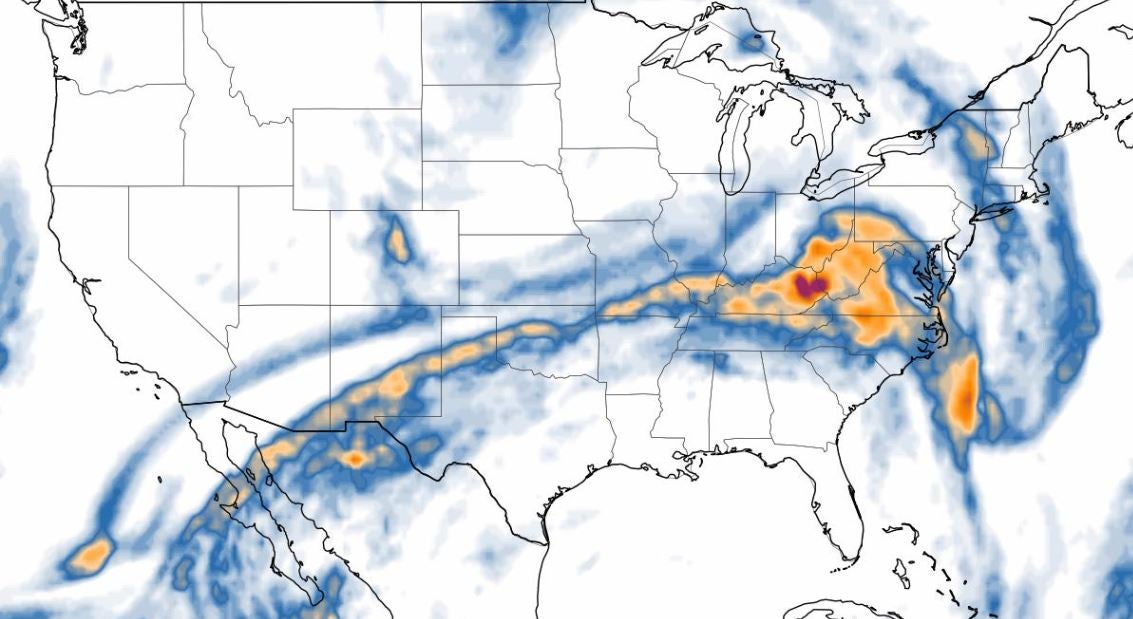
They say knowledge is power — and with this in mind, we are revealing the airports and flight routes in North America that are the worst for turbulence.
Armed with this knowledge, nervous flyers will at least know to expect a few bumps in these spots.
The lists come from website turbli.com, which monitors and predicts turbulence using the same sources pilots and airlines use to plan their flights – the National Oceanic and Atmospheric Administration (NOAA) and the MetOffice.

The most turbulent airport for approaches and descents — take-offs and landings are affected by crosswinds, not turbulence — is Denver, Colorado, followed by Bozeman Yellowstone International Airport.
They both have average annual EDR scores ("eddy dissipation rates") of 17, a unit that describes how fast turbulence disappears.
The website describes EDR values of 0 to 20 as "light — smooth flight conditions"; 20 to 40 as "moderate", leading to "difficulty with walking and food services"; 40 to 60 as "strong", with passengers straining against seat belts; 60 to 80 as "severe", with "violent and sudden changes in altitude; and 80 to 100 as "extreme", meaning the "aircraft is practically impossible to control".
Salt Lake City, Jackson Hole Airport and Las Vegas also make the top 10, with Albuquerque to Denver ranked as the route with the highest average turbulence.
Las Vegas to Reno and Las Vegas to Salt Lake City also make the top 10 most turbulent route table.
Turbulence is caused by warm air rising through cooler air; mountains or manmade structures disrupting air flow, and pockets of air moving in different directions.

It's completely normal and modern aircraft are designed to withstand more turbulence than you’ll ever experience on a flight.
According to data from America’s Federal Aviation Administration (FAA), there have been only 184 serious turbulence injuries between 2009 and 2023, with 37 of those people passengers, the rest crew members.
North America's 10 most turbulent airports
- Denver (17.29 EDR — eddy dissipation rate)
- Bozeman (17)
- Albuquerque (16.44)
- Salt Lake City(16.43)
- Jackson Hole Airport (16.14)
- Las Vegas (15.74)
- Vancouver (15.68)
- Reno (15.67)
- Seattle (15.49)
- Boise (15.40)
North America's most turbulent routes
- Albuquerque — Denver (17.75 EDR)
- Denver — Jackson (17.45)
- Jackson — Salt Lake City (17.41)
- Denver — Salt Lake City (16.94)
- Bozeman — Denver (16.68)
- Ontario — San Diego (16.43)
- Boise — Salt Lake City (16.30)
- Bozeman — Salt Lake City (16.25)
- Las Vegas — Reno (16.06)
- Las Vegas — Salt Lake City (15.87)
Global Airlines: after the Glasgow to New York JFK flight, what comes next?
Back to the Golden Age of Flying? Your minute-by-minute guide of Global Airline’s maiden flight
I tried out United Airlines’ new Dreamliner seats. These are the biggest changes
The seats passengers will use for the 20-hour flight that will become the world’s longest







